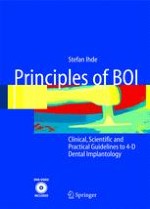2005 | Boek
Over dit boek
Basal Osseointegration as a procedure developed on the basis of disc implantology is the method most commonly used for the unilateral treatment of advanced maxillary atrophy. The method is extremely well developed, because it was refined over a period of decades exclusively by practitioners and become established independently of the universities. The treatment aim can be achieved safely, easily and at low cost. Principles of BOI is most practical and explains exactly how things work. It provides treatment plans, tricks and pitfalls and step-by step guidance.
